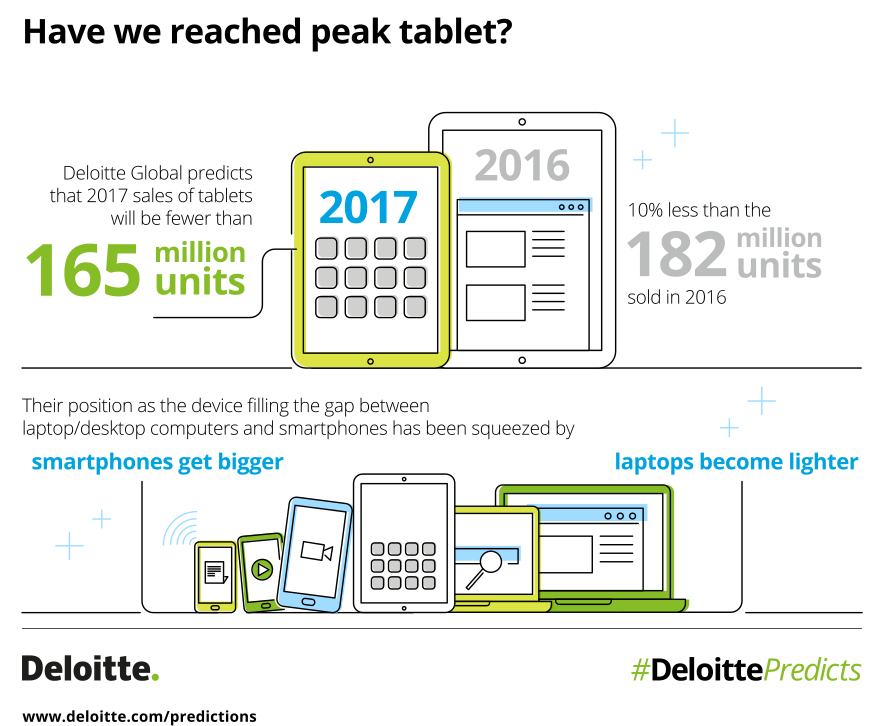At the end of 2012, the US technology blog Business Insider announced in an article that the tablet market is expected to rise to 450 million devices in 2016. The blog had ushered in the entry into the post-PC era. At that time, the tablet market had hardly any significant competition to the iPad. However, the first competing products were in the starting blocks and with them it was hoped that there would be a corresponding upswing. Now, five years later, it is clear that we are a long way from the 450 million devices predicted in 2016.
Prediction: 10% fewer tablet computers than in 2016
A few days ago, the commercial enterprise Deloitte published its current industry trends in the field of telecommunications, media and technologies (TMT) on its website: "Deloitte TMT Predictions" (see reference).
It predicts that around 10 percent fewer tablet computers will be sold over the counter in 2017 than the 182 million units sold so far. The slight decline in sales is justified by the fact that smartphone sales have increased due to the increasing device size. The same goes for laptops. They have become significantly lighter and more powerful in recent years.

Tablets are probably mainly seen as add-ons, but rarely as the preferred main device, as they have no particular purpose. They are more part of an entire household than a single person. Since they are not used as intensively as a smartphone and are constantly taken along, the lifetime is also significantly longer. On average, you can work with a high-quality tablet for up to three years before replacing it.

